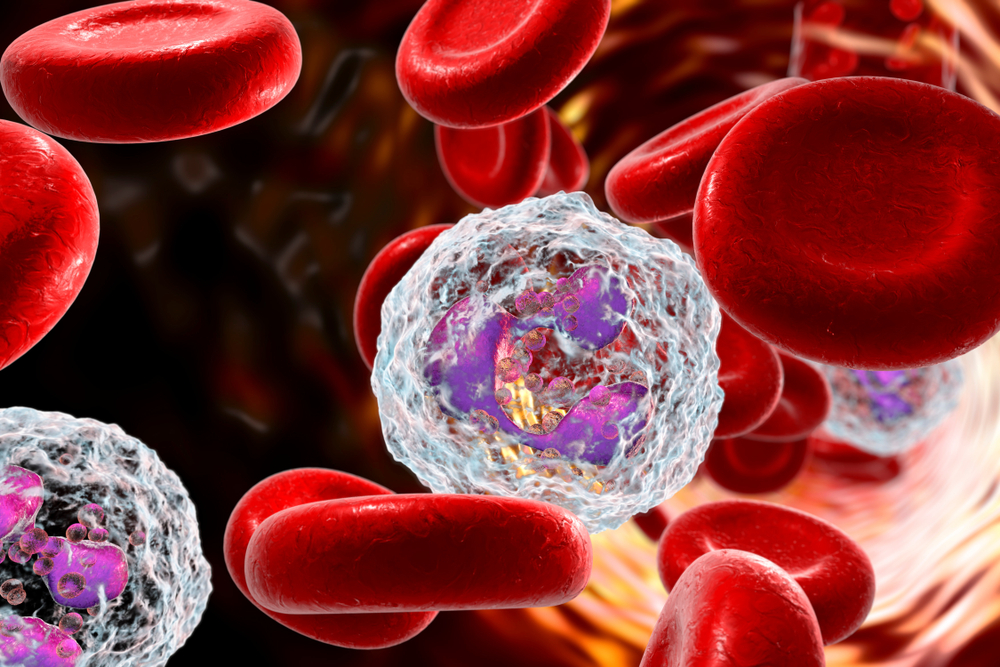All About Neutrophils In The Human Body
All about neutrophils in the human body
Most of us have heard about neutrophils. They appear in blood reports we get from clinical laboratories when doctors order differential counts. Our blood contains two main types of cells. Red blood cells, called erythrocytes or red corpuscles, are far more in the blood and give it the red color we are all familiar with. The other is type called white blood cell, Leucocytes, or white corpuscles.

White corpuscles play a major role in our defense against foreign invaders like bacteria, viruses, allergens, etc. Neutrophils are at the top of the list with a normal range, which is 40% to 70% leucocytes. If they fall below this range, the condition is known as neutrophils low. They are the front-line soldiers in our war against bacteria and toxins.
Where are neutrophils produced?
- Neutrophils are produced in the bone marrow between long bones and the dense hip bones.
- 55% to 60% of bone marrow is reserved to produce neutrophils.
- Inactivate neutrophils need about 5 to 90 hrs to circulate blood and about 2 days inside a cell.
- The production rate of neutrophils is of the order of 10 11 on a normal day and is boosted to 10 12 per day when there is a bacterial infection.
Why are they called neutrophils?
- Normally, the blood, before being studied under a microscope, is stained using standard dyes that stain the different cells with different colors. Neutrophils stain a neutral pink and hence the name.
- Neutrophils are generated at the rate of 10 11 per day, which can increase to 10 12 per day during a bacterial infection. This clearly indicates their importance in fighting bacterial infections.
- Neutrophils have a lobed nucleus. Generally, their nucleus has 2–5 lobes. Conditions of hyper-segmentation can be diagnostic of certain diseases, like a B12 deficiency.
What are the characteristics of neutrophils?
- Neutrophils are generally 12 to 15 microns in size. However, the size reduces to 9 microns when they are in suspension in the blood.
- Basophils and eosinophils are the other two cells in the blood that have a lobed nucleus, and they are collectively called granulocytes.
- The lobes of their nucleus are connected with strands chromatin.
- Neutrophils’ nuclei disappear as they mature, which is a rare mechanism that has only a few parallels.
How do they fight the bacteria that invade us?
- The first step is their deployment to the site of infection in numbers.
- They pass out into the bloodstream through the walls of the blood vessels and interstitial tissue to the infection or inflammation site pretty quickly, in a matter of a few minutes.
- This is a two-step process; the first step is the development of amoeba-like pseudopodia that have a large number of receptors for chemicals released by cells at the inflammation site.
- The second step is the rapid transport of neutrophils to the infection site. This is accomplished by following the chemical markers and amoeboid motion of the neutrophils themselves.
- Recent studies suggest a specific migration behavior called neutrophils swarming. This mass migration is a highly coordinated affair.
- The next process is called phagocytosis. The pseudopodia engulf the bacteria and disintegrate them using powerful chemicals, by a process called degranulation.
- The neutrophils generate something called extracellular trap. This is a mesh of chromatin filaments and certain other chemicals that can kill bacteria. Called NET, or Neutrophil Extracellular Trap, they provide a high local concentration of powerful bactericides. Recent researches have shown these NETs to play a part in inflammations as well.
- The first arrivals simultaneously fight the pathogens and activate other cells of the immune system.
- Recent studies have indicated counterproductive or aggravating functions in autoimmune inflammatory diseases.
What is neutrophils low or neutropenia?
- There are certain conditions where the numbers of these neutrophils are lower than the normal range.
- Chemotherapy for cancer is one of the most important causes of neutropenia or neutrophils low. These patients are victims of violent infections.
- Some of the other major reasons for neutrophils low are radiation therapy, salmonella infections, hepatitis A, B, and C, HIV & AIDS, hypersplenism, malaria, sepsis, antibiotics and certain medications, and autoimmune disorders.
Disclaimer:
The content provided on our blog site traverses numerous categories, offering readers valuable and practical information. Readers can use the editorial team’s research and data to gain more insights into their topics of interest. However, they are requested not to treat the articles as conclusive. The website team cannot be held responsible for differences in data or inaccuracies found across other platforms. Please also note that the site might also miss out on various schemes and offers available that the readers may find more beneficial than the ones we cover.


